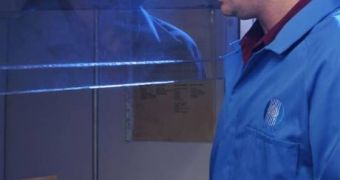Australian experts from the Commonwealth Scientific and Industrial Research Organization (CSIRO) have announced that they are working on a new class of flame-retardant materials, called HIPS (Hybrid Inorganic Polymer System). Reportedly, the innovation is able to withstand temperatures of up to 1,000° Celsius (1832° Fahrenheit), on account of its special inner structure, which combines inorganic geopolymer resins with polymer additives. If the new material is a feasible mass-production option, it may render existing coatings obsolete. Top temperatures that today's materials can withstand are in the 150-250°C range.
“Geopolymers are an emerging class of ceramic-like inorganic polymers produced at room temperatures that have the potential to transform the building products industry. They are not only fire-, blast- and acid-resistant, they are also strong, castable, sprayable, and extrudable, making their potential uses almost limitless. The polymer additives in HIPS improve the flexibility and waterproofing properties, and provide stronger adhesion, which are important properties for a coating,” CSIRO Materials Science and Engineering division expert Dr. Damian Fullston, who has also been the leader of the project, says of the new materials.
In addition to their reported performances, HIPS coatings are also non-hazardous for humans. They are based on water, and therefore contain no organic compounds that can burn or explode and cause accidents. They are also cost-efficient, because they are entirely made out of readily available, raw materials on the market today. They can be applied to brick, wood, or galvanized steel, by either a spray can, a brush or a paint roller. Only at temperatures exceeding 1,200°C do they begin to burn and release smoke, ScienceDaily reports.
Fullston reveals that CSIRO is currently in the process of looking for commercial partners, in an attempt to secure more funding. A large number of possibilities needs to be investigated, including a potential for the manufacturing of fireproof wood composites, as well as various types of seals. At this point, limited funds do not allow for too complex investigations into these matters, but the subjects should interest virtually anybody, so the money will pour in, the scientists believe.

 14 DAY TRIAL //
14 DAY TRIAL //